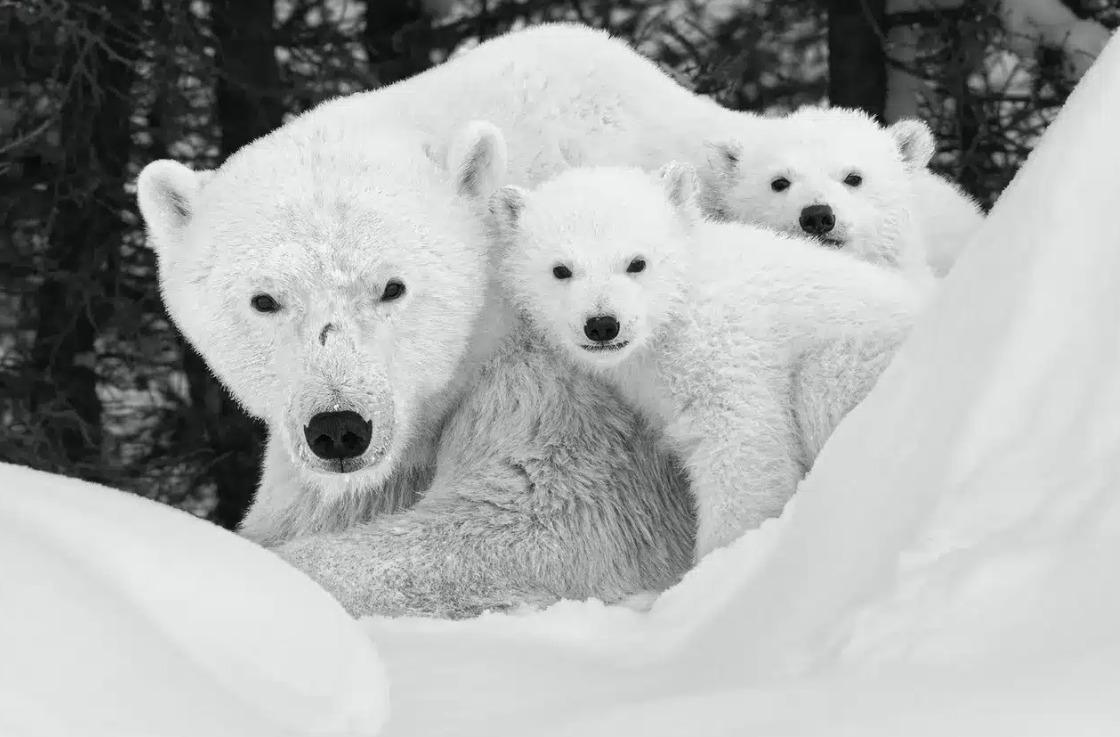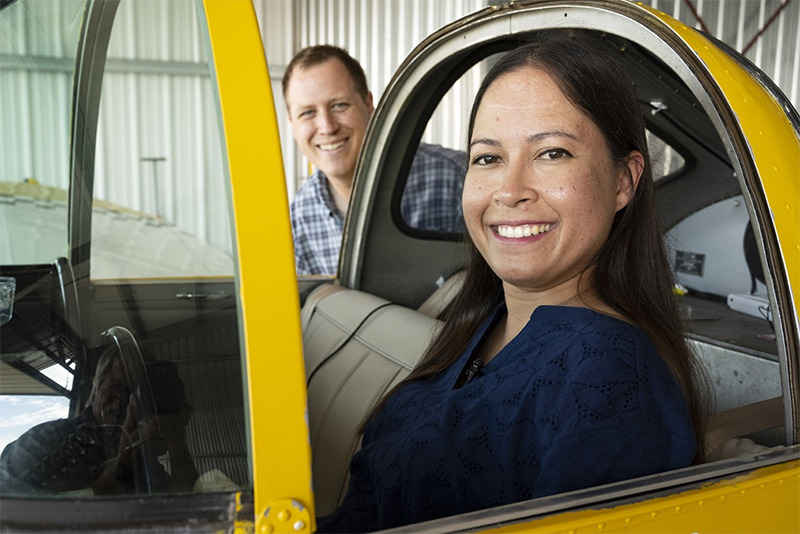
Molly Fletcher: Can drive offset your burnout at work?
This piece is by Molly Fletcher. People assume that drive depletes energy. They believe that level of intensity, focus and daily effort leads to burnout.…
Thought Leader: Molly Fletcher

Annie Leibovitz is not only the western world’s most celebrated living portrait photographer, she is also the only person I have interviewed who tries to postpone our chat as soon as it starts. Appearing on Zoom, her shoulder-length silver hair stylishly unkempt, wearing no-nonsense rectangular glasses, a black padded gilet and grey sweater — precisely the kind of outfit a person would wear if they might need to roll on the floor to take a photograph at any moment — she apologises and asks if we could speak at the weekend. “I’ve taken on too much this year,” she says in her husky east coast accent. “I was completely out of my mind yesterday, and now I’m even more out of my mind.” But we have postponed twice and my deadline looms. I plead with her to stay; she acquiesces.
Leibovitz is in Spain when we talk, installing a large retrospective at the MOP Centre in Galicia, part of the foundation established by Marta Ortega Pérez, the chairwoman of Inditex, which owns Zara. Wonderland focuses on Leibovitz’s maximalist fashion work — like the 2005 Wizard of Oz-themed Vogue shoot with Keira Knightley as Dorothy and Jeff Koons as a flying monkey. A notorious perfectionist, Leibovitz has decided to exhaust herself by adding an immersive section of earlier work. “It seemed like, oh, this is a simple idea. But of course I couldn’t help myself and made it more complicated!”
At the same time she is rereleasing Women, her landmark 1999 photography book, with a new companion volume featuring portraits taken over the past 30 years. The original featured female teachers and coalminers, along with cultural icons including Toni Morrison, Louise Bourgeois and Elizabeth Taylor. “It’s hard to believe but when we did the first volume it was the first time there’d been a collection of images of [working] women. It was pretty powerful,” she says. “We didn’t know what we looked like.”
The original idea came from Susan Sontag, Leibovitz’s partner for more than a decade, who died in 2004. At first, Leibovitz recalls, “I wasn’t enthusiastic — I thought it was too big a subject.” But the mid-1990s felt like a time of feminist awakening: Hillary Clinton had just declared that “women’s rights are human rights” in her speech at the Fourth World Conference on Women in Beijing. Leibovitz’s images of Las Vegas showgirls in and out of costume, which ran in The New Yorker in 1996, were “transformative for me, in so many ways”. Eventually, “I turned to Susan, and I said, I think there is something to this.”
Leibovitz worked on the original Women for about four years. Sontag — ill with cancer — wrote the introduction. “She wrote it while she was on chemo. Rereading it now, it’s incredible she did that.” Sontag argued that men already had enough stories told about them; women needed to catch up. “It’s still true,” says Leibovitz, who got the book out again a few years ago, when Clinton’s production company contacted her, seeking ways to mark the 30th anniversary of the Beijing conference. It still “kind of held together”, she says, but she wanted to expand its scope. She took images from her archive — a line-up most photographers would envy, including Lady Gaga, Dolly Parton, Oprah Winfrey, Joan Didion and Queen Elizabeth II — but “thought it was very flat”. And so life got complicated again, as Leibovitz arranged about a dozen new shoots. Of those, she says, “the big surprise was Michelle Obama”. Leibovitz had photographed her several times, usually wearing a shift dress at the White House. This time Obama’s team asked if she could wear jeans. On set, with Obama’s long braids flying, Leibovitz felt she was witnessing her “taking off the layers of all those years, being first lady, and coming back to herself”. Her assistant looked at Leibovitz and said: “That’s my first lady.”
There is a new portrait of Clinton too, taken at her paper-stacked desk within her home office in Chappaqua, a room Clinton had resisted being photographed in before. “It’s very common. People don’t want you to see their messes. But it’s the mess that shows that you work.” The book reflects a difficult time for American women, which shaped her edits. She chose a “very noble” picture of Clinton at first. Then, “as our times get more difficult, I went back and found something a little bit more pensive”. That said, she points out that an opening essay to the volume, written by her friend Gloria Steinem, strikes a cautiously optimistic tone by taking the long view and telling her own story: “Listen, we haven’t really gone backwards. If you want to go backwards, go to the Fifties, when [Steinem] was growing up. You weren’t even recognised in the room, you weren’t even a person.”
Representation of female bodies has changed for the better too, Leibovitz says. One of the book’s most memorable images is a 2022 shot of a reclining, pregnant Rihanna. (Leibovitz likens shooting her to being “dragged behind a car! She is so smart. An incredible woman.”) Rihanna was “very much in charge of what she was wearing” in the shoot, Leibovitz says, something she loves about female sitters now. She shot the star for Vogue about a decade before. “I remember the fashion editor calling me up the night before, saying, ‘Rihanna doesn’t fit anything. She doesn’t fit anything!’ Because we were looking for, like, the size two. And I said, ‘You’re wrong. You don’t have something that fits her.’ So we went back and she ended up wearing a Chanel dress backwards. It’s ridiculous! Things have really progressed in that respect. You know, women come in all sizes and shapes — exciting news!” she says, laughing.
Her own work helped push that understanding, most famously with the 1991 Vanity Fair cover of a nude, pregnant Demi Moore, which became a cultural turning point. At the time “pregnancy was something you had to work around”, she says, gesturing across her shoulders — where photos of gestating celebrities were cropped. When the shoot was “basically finished”, Leibovitz suggested they try a few pictures that actually showed Moore’s pregnancy. “I went back to New York, and I have to credit Susan Sontag, because she called [the editor] Tina Brown and said, ‘You got to do this.’ I know that it’s not really talked about that much. It was Susan.” Leibovitz says she didn’t realise “the power of it until after it was published”. Sontag, though, “was so intelligent and intuitive — and she wasn’t always going to be able to explain to me exactly why she knew that it was important”.
Much has been written about Leibovitz and Sontag’s relationship, though it was not officially acknowledged in the press until after Sontag’s death. Leibovitz says Sontag shaped her thinking. “Being with Susan gave me access to how she thought — good and bad,” she says with a smile. “She wasn’t afraid of anything, she was fearless. I learnt a lot from her.”
You get the impression Leibovitz would not use the same adjective about herself. In a 2006 documentary Steinem described the 6ft photographer as “the tallest and most authoritative unsure person that I’ve ever seen”. But her body of work is courageous.
One of six children, Leibovitz was born in Connecticut but moved frequently and took her first photos when her father was stationed in the Philippines during the Vietnam War. She had already secured a job at Rolling Stone magazine while she was a student at the San Francisco Art Institute, in part on the strength of photos she took of Allen Ginsberg at a San Francisco peace march. During that time she famously embedded herself on tour with the Rolling Stones in 1975, and took the last portrait of John Lennon hours before he died in 1980. “I grew up, basically, at Rolling Stone,” she says. “I never put my camera down.” When she was younger, she says, “I was probably more ruthless about just wanting the photograph, and that was it. And then you grow up a little bit, can’t just want the photograph, you have to be a human being, slightly.”
Leibovitz became a mother at 52, having her first child, Sarah, in 2001, followed by the twins Susan and Samuelle. “You know, I’m one of six kids,” she says. “I just was determined to have children. I let a lot of time pass before I suddenly realised, if I didn’t do that, I knew I would regret it.” Having kids “was not a mistake. You know, it is true, everything that everyone says about it.” Her kids are a big part of her downtime, which she spends at her upstate home. Together they watch The Gilded Age and The Great British Bake Off, during which Sarah makes wild creations inspired by the show. “They’re all figuring their lives out, which is kind of fun to watch. But they’re not interested in photography — and they’re particularly not interested in me taking their picture.”
As for the future, portraiture, not fashion, is where she feels she belongs. “I mean, doing portraits and doing stories. I think that Anna Wintour came from a journalistic family. She really loved the idea of using me for Vogue. And I had a really beautiful ride, but the years that I have left, I’d like to concentrate on stories and portraits.” She is working on an archive show and a four-volume set of books for release in 2028, covering “my work, the way I see it” — which has sometimes been different from the perception, she says, as she has sought to “work in the commercial landscape of magazines but still think of myself as an artist within it. It’s not for the light-hearted. It’s up and down … but in the long run I think it will hopefully balance out,” she says, laughing.
Beyond the gallery, Annie Leibovitz is a dynamic keynote speaker who brings unparalleled insight into creativity, visual storytelling, and the business of culture. She offers audiences a unique perspective on leadership, innovation, and the power of images to drive connection and impact. To host Annie Leibovitz at your next event, contact WWSG.
Molly Fletcher: Can drive offset your burnout at work?
This piece is by Molly Fletcher. People assume that drive depletes energy. They believe that level of intensity, focus and daily effort leads to burnout.…
Thought Leader: Molly Fletcher
Paul Nicklen: A Reverence for Nature
Standing in front of any of Canadian photographer Paul Nicklen’s large-scale images in the current exhibition at Hilton Contemporary, one cannot help but be totally…
Thought Leader: Paul Nicklen
Armless pilot celebrates ADA anniversary in flight
Jessica Cox and Sen. Tom Harkin mark 30-year anniversary with a special flight It’s been nearly 30 years since the passage of the Americans with…
Thought Leader: Jessica Cox

